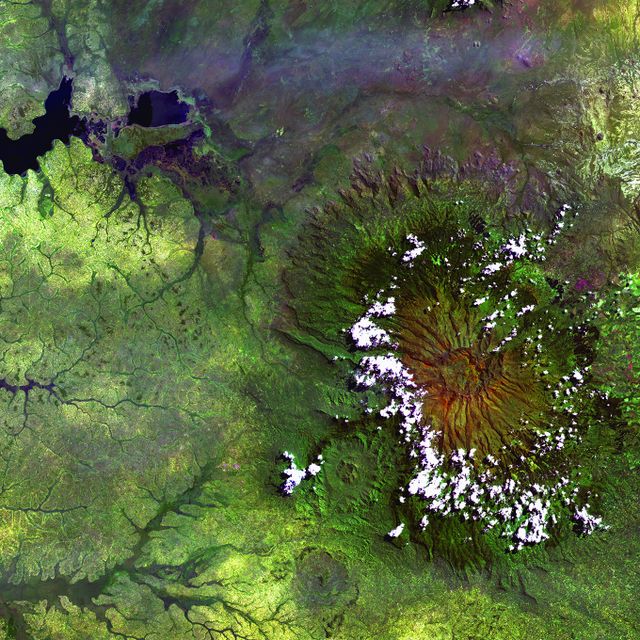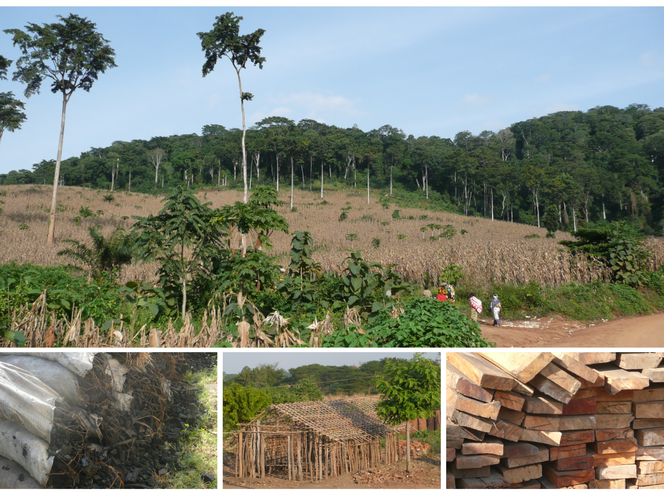
Geospatial economics highlights importance of carbon for equitable conservation
These are the findings of a decade-long collaboration between scientists from Africa, Europe and the United States, into the costs and benefits of conserving the forests and woodlands of Tanzania’s Eastern Arc Mountains - a global biodiversity hotspot estimated to provide nature-based benefits to the world equivalent to US $8.2 billion.
Key takeaways
Decade-long study details how the economic gains of conservation flow largely to international beneficiaries, while local rural communities often pay substantial net costs.
Without global investment in the climate benefits of forests, deforestation and forest degradation in some of the world’s poorest and most biodiverse regions may continue out of local necessity.
Carbon markets can be part of the solution, but this requires transparency around the benefits delivered, both internationally, and locally and nationally for the communities involved.
BeZero’s Director of Geospatial and Earth Observation, Dr Phil Platts, is the lead author of the study, which is the largest and most detailed of its type ever undertaken in the tropics.
On average across the region, carbon payments of between US $6 and $47 per tCO2e would be required to offset local opportunity costs, depending on the time horizon, discount rate, and agricultural yield. Given costs involved in establishing and operating carbon projects, these estimates should be considered an absolute minimum for equitable carbon pricing in rural Africa.
The authors built spatially-explicit ecosystem service models using socioeconomic surveys of thousands of Tanzanians (including farmers and non-timber forest product producers, pitsawyers, carpenters, timber and charcoal dealers, water vendors, hoteliers and forest managers), combined with agricultural and household census data, geospatial data on climate and land use, hydrological flows and trade routes, and thousands of vegetation plots and disturbance transects.
They then simulated changes in carbon stocks, conservation costs and service flows through time and across space under opposing management pathways, tracking to whom in society the costs and benefits flowed.

Forest conversion and use in the Eastern Arc. Clockwise from top: maize fields encroach on standing forest; timber is used locally and transported nationally and internationally; people living near the forests harvest poles to build their homes; charcoal is produced locally and sold on for use in urban areas. Credits: Marije Schaafsma.
Besides the conservation of biological diversity, climate regulation is the primary global benefit from protecting large areas of tropical forest. And although the people living near these forests feel some of this benefit, they also bear substantial conservation costs – particularly through the loss of potential income gained by clearing trees for agriculture, timber and charcoal.
“International gains from the conservation of this biodiversity hotspot far outweigh the gains to local communities directly involved in their conservation” said Andrew Balmford, Professor of Conservation Science at the University of Cambridge and senior author of the paper.
Intact tropical forests act as carbon sinks, removing carbon dioxide from the atmosphere and helping to regulate the global climate. Conversion of these natural habitats to agricultural land results in vast carbon emissions.
“The huge demand for cropland in Tanzania, not just from smallholders, leads to clearing forests and woodlands - many of which aren’t formally protected. Smallholders are pushed further and further into the mountains because they need to make a living” said Dr Marije Schaafsma at Vrije Universiteit Amsterdam, one of the study’s lead authors.
“Investments that help farmers boost yields on their land would potentially provide a long-term solution to the pressure on natural habitats, without compromising local food production or livelihoods” said Pantaleo Munishi, Professor of Ecosystems, Biodiversity and Climate Change Management at Sokoine University of Agriculture in Tanzania, who also co-authored the study.

Clouds rise through degraded forests in the Eastern Arc Mountains. Credit: Marije Schaafsma.
The paper reports that the greatest overall global economic gains come from the most biologically important sites – but these are also most costly for locals to conserve. This means that without financial support, the incentives to clear natural habitats are highest in the most biologically important places.
Tanzania’s Eastern Arc Mountains are considered a global priority for conservation, and following extensive forest clearance, local and national governments have established a network of protected areas to help to conserve the remaining biodiversity and sustain ecosystem services.
The Eastern Arc is home to almost 500 species of plants not known to exist anywhere else in the world and many unusual animals including a tree-dwelling crab, and a monkey previously unknown to western science called the kipunji.
As well as supporting biodiversity and regulating climate, the forests harbour medicinal plants, provide drinking water to major cities, and support national and international tourism. But conserving them also leads to loss of potential income from agriculture, timber and charcoal sales, and incurs significant management costs.
The authors say that tropical forests should be viewed as essential global infrastructure, and that richer beneficiaries have a responsibility to step up and enable their conservation in an equitable way.

Hundreds of Eastern Arc species exist nowhere else on Earth. Clockwise from top: kipunji, a monkey not known to western science until 2003; East Usambara tree-hole crab, whose use of tree holes for moulting produces water that is used locally for treating calcium deficiency during pregnancy; Barbour’s tree frog; grey-faced sengi, a shrew-like mammal more closely related to an elephant than to a shrew. Credits: Tim Davenport (kipunji and tree frog), Julian Bayliss (crab), Francesco Rovero (sengi).
Across the world, carbon credits from forest conservation sell for around US $8 per tonne (Xpansiv CBL Market data, January-August 2023, mean over projects using REDD+ methodologies). In the Eastern Arc, this would be insufficient to cover local opportunity costs, given that carbon revenues also need to cover costs associated with establishing and operating projects.
BeZero’s carbon ratings indicate that REDD+ credits in the voluntary carbon market vary widely in their carbon efficacy, from ‘very high’ to ‘lowest’ likelihood of achieving 1 tonne of CO₂e avoidance or removal. The extent to which carbon revenues reach and address local livelihoods also varies, and is generally opaque - buyers should look for projects that publish the share of revenues going back to communities.
The UN Sustainable Development Goals are commonly used by carbon projects to claim co-benefits beside carbon. However, only 8% of REDD+ projects claim No Poverty (SDG 1), and even fewer claim Zero Hunger (SDG 2) or Affordable and Clean Energy (SDG 7), goals that are central to addressing conservation costs in rural Africa and elsewhere. Evidence pertaining to these co-benefits is subject to less rigorous reporting, disclosure, and independent oversight than is the case for the carbon accreditation process.
Carbon markets could facilitate equitable conservation of some of the world’s most biodiverse habitats, but there needs to be greater transparency around how investments are spent, and the net benefits delivered for people and climate.
Adapted from a press release by the University of Cambridge.
Platts, P. J. et al. (2023). Inequitable gains and losses from conservation in a global biodiversity hotspot. Environmental and Resource Economics. https://doi.org/10.5751/ES-05670-180306